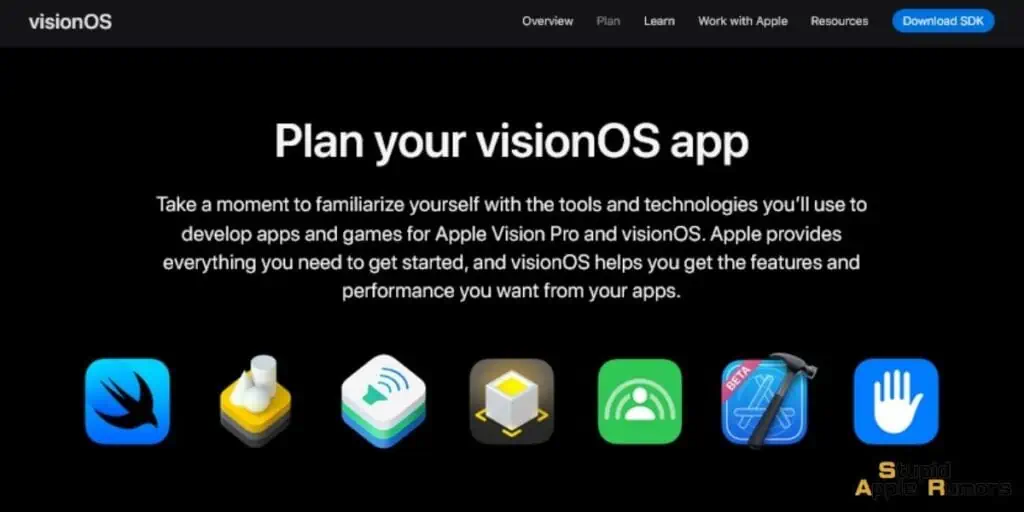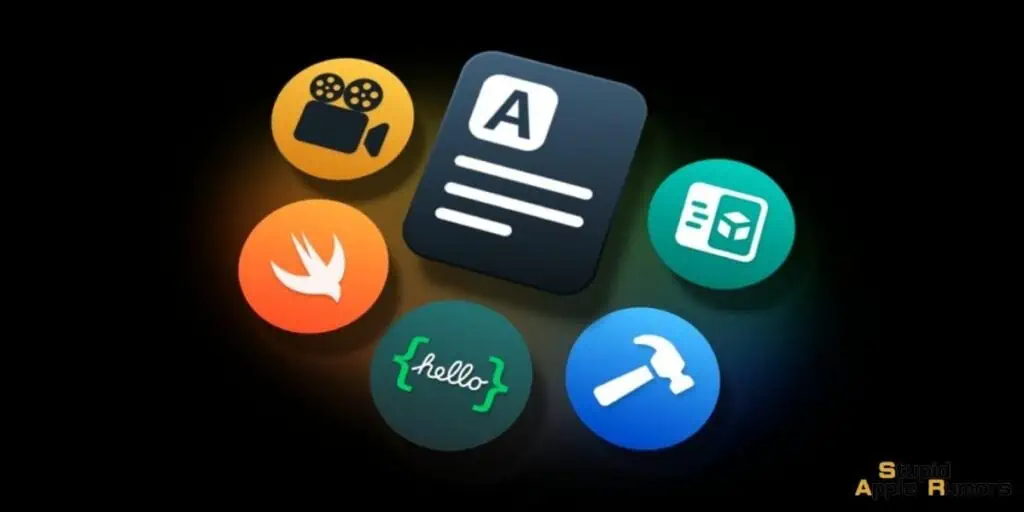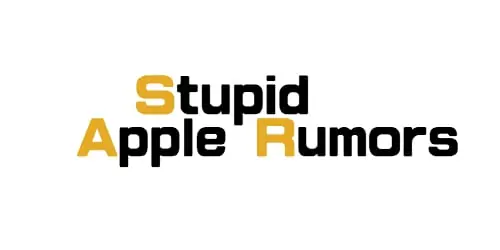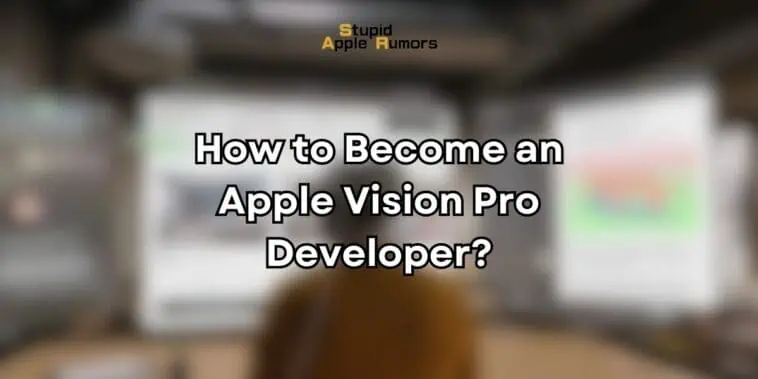Apple’s recent announcements have left the tech community buzzing with excitement.
The company’s foray into spatial computing, marked by the upcoming Apple Vision Pro, is creating a playground for innovation.
Developers worldwide are keen to get their hands on the Vision Pro Developer Kit, which Apple has now made available.
So how do you become a Vision Pro Developer? This article is your guide to understanding the process, fulfilling the prerequisites, and making the most of the development kit.
Get ready to embark on a journey of innovation!
Also Check out: Apple Vision Pro vs Meta Quest 3 | Which Headset Should You Buy?
How to Become an Apple Vision Pro Developer?
Table of Contents
First, you’ll need strong programming skills, particularly in languages like Swift or Objective-C.
Familiarity with key Apple technologies such as Xcode, RealityKit, and ARKit is essential.
To get started, apply for the Vision Pro Developer Kit through the Apple Developer website.
If approved, you’ll get access to tools, support, and a Vision Pro unit for testing.
What is Apple Vision Pro?

Before we dive into the specifics, it’s essential to understand what Apple Vision Pro is.
Scheduled for launch next year, Apple Vision Pro is Apple’s ambitious new platform geared towards creating immersive spatial experiences.
Apple has crafted a powerful operating system, VisionOS, to run these experiences.
The primary goal is to offer developers a suite of robust tools that allow the building of apps that integrate seamlessly into this new realm of computing.
Prerequisites: Do You Have What it Takes to Be a Vision Pro Developer?
To be an Account Holder in the Apple Developer Program or Apple Developer Enterprise Program, you’ll need to demonstrate some essential skills and understand key technologies:
- Programming Skills: A strong grasp of programming languages such as Swift or Objective-C is mandatory.
- Apple Technologies: Familiarity with Xcode, RealityKit, ARKit, Metal, and SceneKit is crucial.
- Spatial Computing: A good understanding of spatial computing concepts will set you apart.
- Innovation: Last but not least, a creative and innovative mindset is a must.
If you’re not yet adept at these, don’t worry. There are numerous resources available online and in Apple Developer documentation that can help you catch up.
How to Apply for the Vision Pro Developer Kit

To apply for this golden ticket, head to the Apple Developer website. Sign in with your Apple ID and fill out the form.
You’ll need to specify whether you’re working on a new app or modifying an existing iOS or macOS app to be compatible with VisionOS.
Each application goes through a stringent review process, with Apple prioritizing those that aim to leverage Vision Pro’s unique capabilities.
What’s Included in the Vision Pro Developer Kit?

If your application is successful, you’ll receive a Vision Pro Developer Kit. This kit is designed to help you build, iterate, and test your app efficiently on Vision Pro. Here’s what you’ll get:
- The Device: An Apple Vision Pro unit for hands-on testing and development.
- Setup Assistance: Help with the initial setup of your device.
- Code-Level Support: Two extra code-level support requests for troubleshooting code-related issues.
- UI Design Guidance: Direct check-ins with Apple experts to help refine your app’s user interface.
The Developer Kit is provided on a loan basis, meaning you’ll have to return it when asked. Your workspace must be private and secure, accessible only to you and your authorized developers.
How to Choose the Right Framework for Vision Pro App Development?

When it comes to developing applications for Apple’s Vision Pro, you’ll come across several frameworks that can assist you in creating the best user experiences.
Among the most notable are SwiftUI, UIKit, RealityKit, and ARKit. Each framework has its unique features and benefits, which could make it the perfect fit for your specific project requirements.
SwiftUI: The Modern, Declarative Approach to UI
SwiftUI is Apple’s newer framework designed to build interfaces across all Apple platforms, from iOS and iPadOS to macOS, watchOS, and tvOS. What sets SwiftUI apart is its declarative syntax. You specify what you want the UI to look like, and SwiftUI takes care of the actual rendering. This offers a lot of power for creating complex and interactive interfaces with less code.
Benefits for Vision Pro Development:
- Declarative Syntax: Makes it easier to visualize what the user interface will ultimately look like.
- Cross-platform Compatibility: Build for multiple Apple platforms with a single codebase.
UIKit: The Tried-and-True Foundation of iOS Apps
UIKit has been the go-to framework for iOS and iPadOS application development for years. Unlike SwiftUI, UIKit follows a more traditional, imperative approach, but it is still incredibly powerful and flexible.
Benefits for Vision Pro Development:
- Legacy Support: Ideal for apps requiring backward compatibility with older iOS versions.
- Extensive Library: Offers a wealth of UI components and controls, honed over years of iOS development.
RealityKit: The Specialist for Augmented Reality
RealityKit serves as a toolbox for those interested in crafting 3D or augmented reality (AR) experiences. Built atop Metal, Apple’s high-performance graphics engine, it delivers low-latency rendering of 3D content. RealityKit comes loaded with features like physics simulations, animations, and realistic lighting to make AR experiences more lifelike.
Benefits for Vision Pro Development:
- High-Performance Rendering: Takes full advantage of Metal for seamless 3D experiences.
- Rich AR Features: Provides an array of tools for creating dynamic and immersive augmented reality experiences.
ARKit: Enabling Rich AR Interactions
ARKit plays a critical role in enabling augmented reality capabilities for apps. It utilizes the device’s camera and motion sensors to map out and track the real-world environment. This allows developers to place virtual objects in real-world settings convincingly. From plane detection to face tracking, ARKit offers a comprehensive set of tools for AR development.
Benefits for Vision Pro Development:
- Environment Tracking: Allows for accurate placement of virtual objects in real-world settings.
- Feature-Rich: Comes with various tools for plane detection, face tracking, and understanding spatial relationships between objects.
Which Framework Should You Choose?
The best framework for your Vision Pro development project will largely depend on your app’s specific needs:
- For modern, cross-platform UI design, SwiftUI is the obvious choice.
- If you need backward compatibility or a more extensive UI component library, UIKit would be ideal.
- For applications focused on augmented reality and 3D experiences, RealityKit is your best bet.
- To imbue your app with complex AR interactions, you can’t go wrong with ARKit.
8 Tips to Follow While Developing Apps on Apple’s Vision Pro
Developing for Apple’s Vision Pro is an extraordinary opportunity to delve into the future of spatial computing.
The new VisionOS transforms regular app experiences into 3D spaces, offering an unprecedented level of immersion.
As a developer, mastering this new dimension requires a shift in your usual development practices.
Below are some key tips that can help you unlock the full potential of Vision Pro for a memorable user experience.
1. Embrace the Third Dimension
Every app in VisionOS exists in 3D space. Even if you’re adapting an existing 2D app from iOS or iPadOS, you should remember that your application will appear in a 3D context.
As a developer, it’s essential to adapt your design and functionality to complement this spatial setting.
2. Opt for a Landscape Screen
Vision Pro’s unique Field of View (FoV) favors a landscape orientation. It’s much easier for users to scan their eyes from left to right than up and down.
Adjust your UI and content layout to make the most of this horizontal perspective for a more user-friendly experience.
3. Focus on User Comfort and Posture
Vision Pro allows for a variety of viewing experiences. To ensure user comfort, aim to position your content within an ideal viewing distance and along a natural line of sight.
There could be instances where you might need to deviate from this rule for unique app experiences, but generally, comfort should be a top priority.
4. Recompile Older UIKit Apps for a 3D Presence
If you have older UIKit applications, they can be recompiled to work on VisionOS. While they won’t offer a full 3D experience, they will adopt certain 3D features and harmoniously coexist with apps built using SwiftUI.
5. Be Considerate of Physical Space
Remember, users will be interacting with your app in real-world environments. Minimize the need for excessive physical movement or space, as this can be both impractical and potentially hazardous for the user.
6. Leverage Depth for Functionality
In a 3D environment, depth isn’t just aesthetic; it’s functional. Consider placing frequently used controls closer to the user to simplify interaction, or create 3D objects that are not just visually appealing but also interactive and useful.
7. Adapt Lighting According to Spatial Conditions
VisionOS allows object lighting to be influenced by the user’s actual environment. This adds another layer of realism to your app.
For more precise control, you can also use image-based lighting assets to create specific lighting conditions within your app.
8. Integrate Advanced Accessibility Features with ARKit
One of the most remarkable aspects of VisionOS is its support for ARKit features like skeletal hand tracking. This opens the door for incredibly intuitive controls, like hand gestures.
Additionally, VisionOS offers accessibility features that allow interaction via eye movement, voice commands, and even head motions.
Leveraging these tools can make your app accessible to a broader audience.
Conclusion
Becoming a Vision Pro developer isn’t a cakewalk, but it is an immensely rewarding journey for those who are passionate about shaping the future of spatial computing.
With Apple’s Vision Pro Developer Kit, you’ll have the tools and support to make your dream projects a reality.
So, what are you waiting for? Dive into the fascinating world of spatial computing with Apple’s Vision Pro and be a part of this game-changing era in technology!
Related


